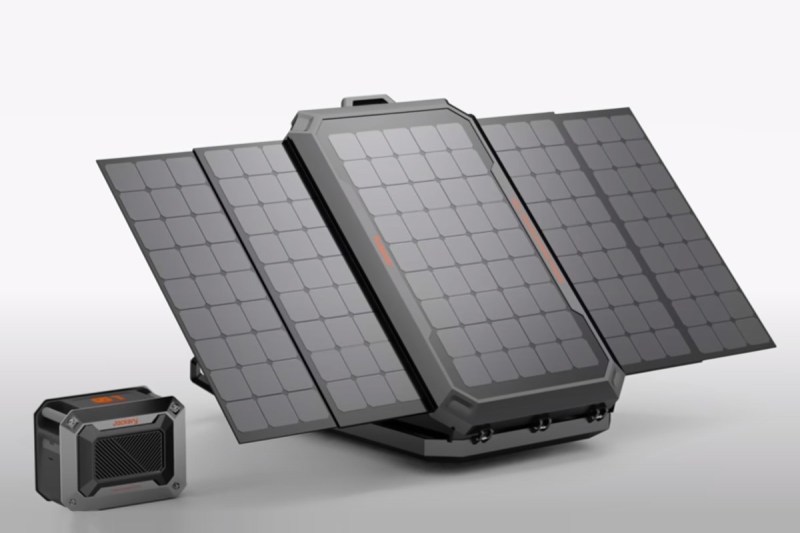
Among the overlanding community, Jackery is a household name known for its best-in-class portable power stations. We’ve personally tested every solar generator in Jackery’s quiver, and we can confirm that they’re the real deal. So, it’s safe to say it knows a thing or two about go-anywhere power. But its latest announcement—a next-gen rooftop tent with a boatload of solar capability—still managed to surprise us.

What makes Jackery’s solar rooftop tent concept so different?
The all-new prototype—tentatively the “Jackery Solar Tent”—showcased at CES shows a rooftop tent that maximizes solar capability. The center panel is good for 400 watts, but dual slideout panels extend to either side when parked at camp for a full 1000-watt array with the tent open and facing south. Under ideal conditions, that’s enough to generate almost 5kWh per day in the sunnier Western United States or around 4kWh closer to the Eastern seaboard. That’s a serious amount of power to live comfortably in your vehicle for a week or longer. When plugged into one of Jackery’s beefy power stations, this setup guarantees enough juice to run “basic” appliances like portable refrigerators and camping lights, but even power-hungry devices like microwaves, blenders, and air-conditioners (albeit briefly), too.
Jackery’s account manager, Nimesh Patel, confirms that the tent package will also include a removable 1264Wh power station that blends seamlessly into the RTT without taking up too much space. He added that Jackery has plans to offer expansion kits with additional power storage and even an AC inverter kit to top up the power station from the vehicle’s alternator on the go. With even just the built-in power station and a single expansion battery, this solar rooftop tent has the capacity to keep most overlanders going off-grid almost indefinitely.

Adding solar panels to modern rooftop tents is nothing new. Clever overlanders have been doing it for years. But most solutions involve bolting on third-party flexible panels that don’t take advantage of the full square footage of the RTT they’re attached to. Jackery is, of course, looking to solve that problem with this all-in-one solution. What’s more, The company is aiming to make this compatible with as many vehicles as possible and claims a projected weight of under 200 pounds. If true, it could open up a whole new world of long-term overlanding.
Before we forget, there is a pretty sweet-sounding rooftop tent under all this integrated solar panel gadgetry. While Jackery has yet to announce the final details, the CES concept included multiple power ports, a memory foam mattress big enough to sleep two, and dimmable interior lighting with color control. It’s all wrapped in waterproof fabric with blackout curtains and insulation, making it (presumably) a four-season shelter.

You can buy the new “Jackery Solar Tent”—but not yet
The bad news is that this incredible rooftop tent is only a concept at the moment. The good news is that Jackery plans to put it into production sometime near the end of 2024. No word on pricing or final specs, but this is one bit of cool overlanding gear we’re very excited about for this coming year.


